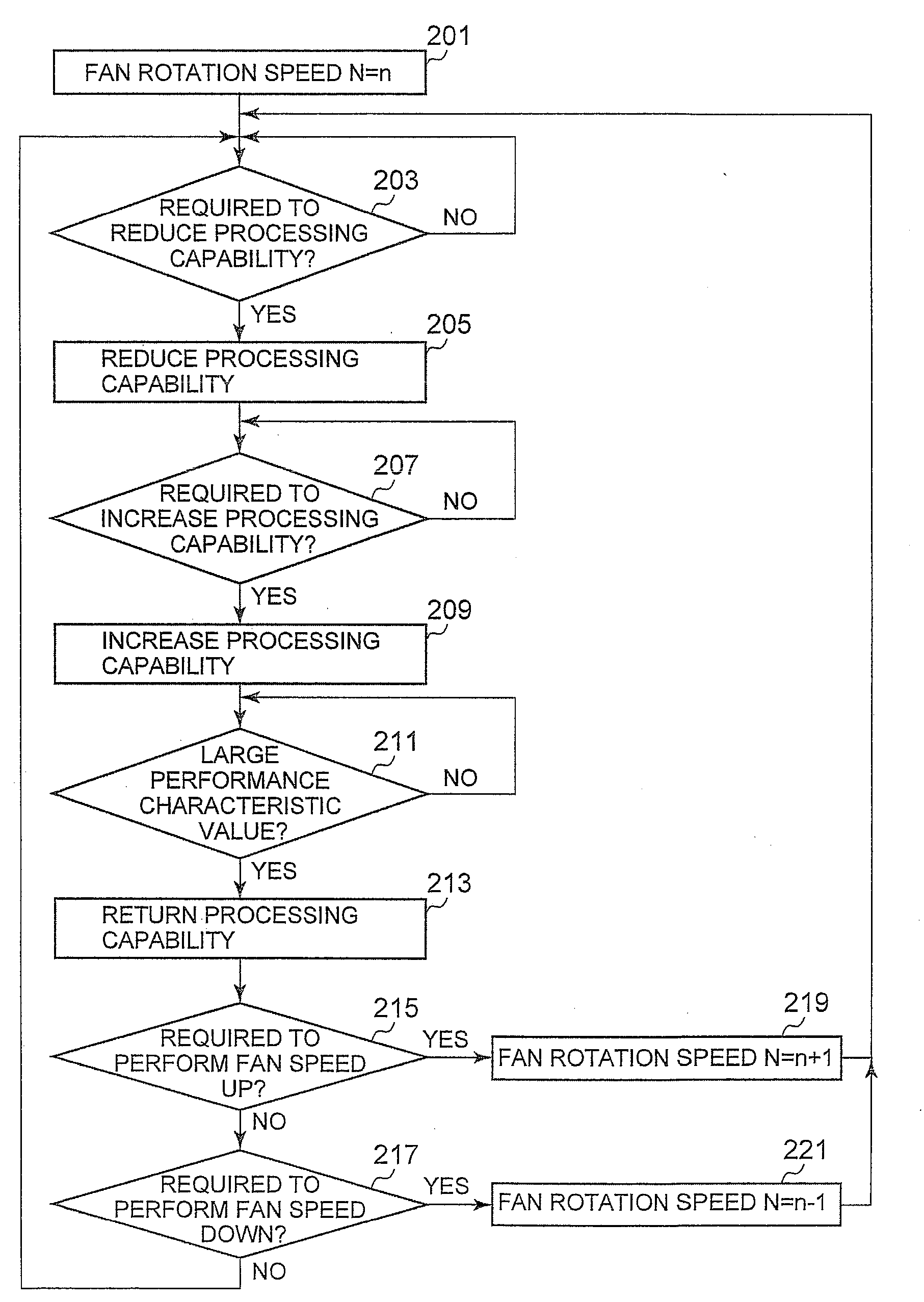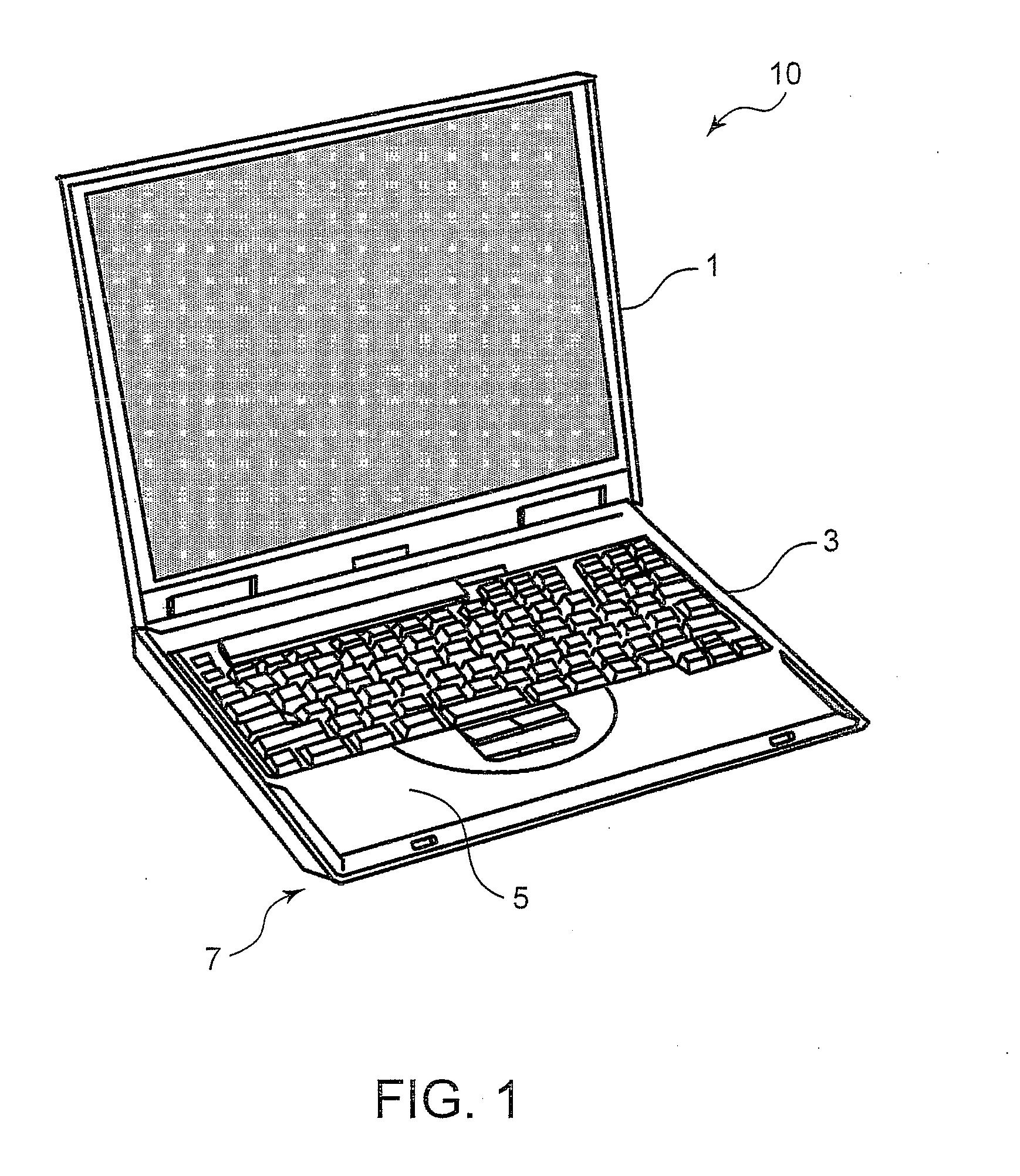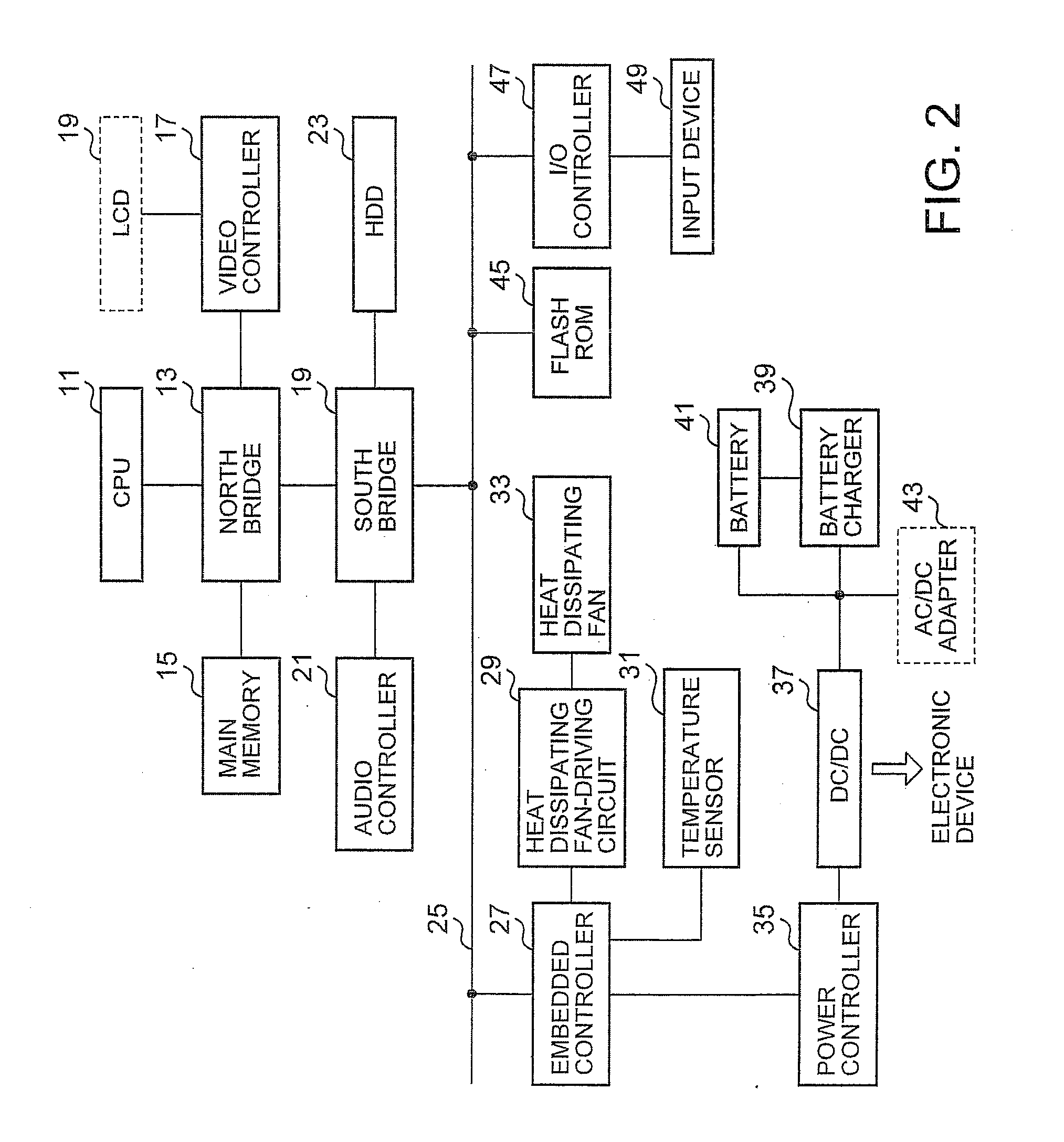Heat Dissipation System for Computers
a heat dissipation system and computer technology, applied in the field of heat dissipation, can solve the problems of processor becoming incapable of processing a part of a task, the rotation speed of the heat dissipating fan will increase, and the performance control portion temporarily reduces the processing capability of the processor, so as to maximize the level of user comfort
- Summary
- Abstract
- Description
- Claims
- Application Information
AI Technical Summary
Benefits of technology
Problems solved by technology
Method used
Image
Examples
Embodiment Construction
[0032]Referring now to the drawings and in particular to FIG. 1, there is depicted an external perspective view of a note PC 10, in accordance with a preferred embodiment of the present invention. FIG. 2 is a block diagram of the note PC 10. The note PC 10 includes a system housing 3 in which a keyboard is mounted on a surface thereof and electronic components are accommodated and an LCD housing 1. The system housing 3 has mounted therein a set of electronic components that is depicted as a solid block in FIG. 2. During the usage of the note PC 10, a bottom surface 7 of the note PC 10 makes contact with user's laps and a palm rest 5 makes contact with user's hands. Therefore, the surface of the system housing 3 needs to be maintained at a predetermined temperature or lower, and for this purpose, a forced air-cooling type heat dissipation system has been conventionally employed in the note PC 10.
[0033]A CPU 11 is an arithmetic processing device performing the central function of the ...
PUM
 Login to View More
Login to View More Abstract
Description
Claims
Application Information
 Login to View More
Login to View More - R&D
- Intellectual Property
- Life Sciences
- Materials
- Tech Scout
- Unparalleled Data Quality
- Higher Quality Content
- 60% Fewer Hallucinations
Browse by: Latest US Patents, China's latest patents, Technical Efficacy Thesaurus, Application Domain, Technology Topic, Popular Technical Reports.
© 2025 PatSnap. All rights reserved.Legal|Privacy policy|Modern Slavery Act Transparency Statement|Sitemap|About US| Contact US: help@patsnap.com



